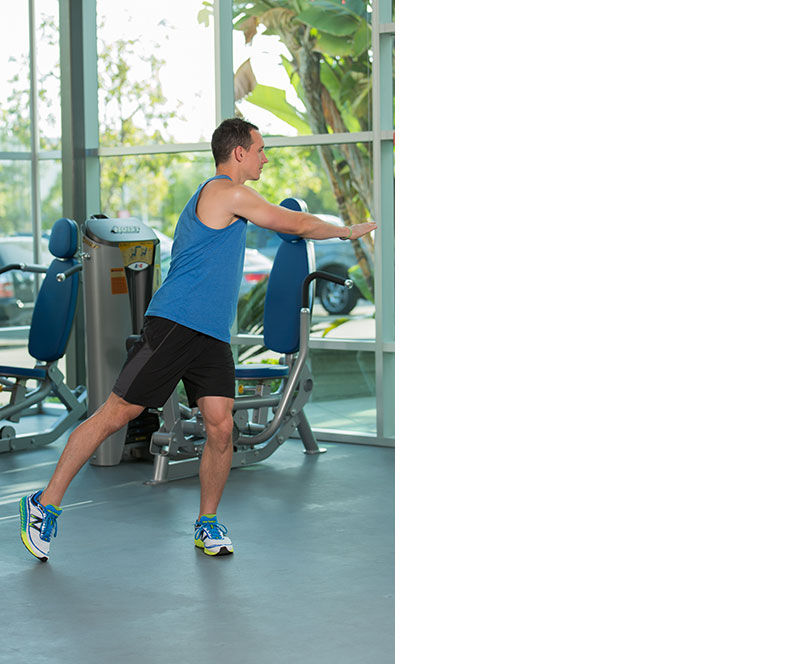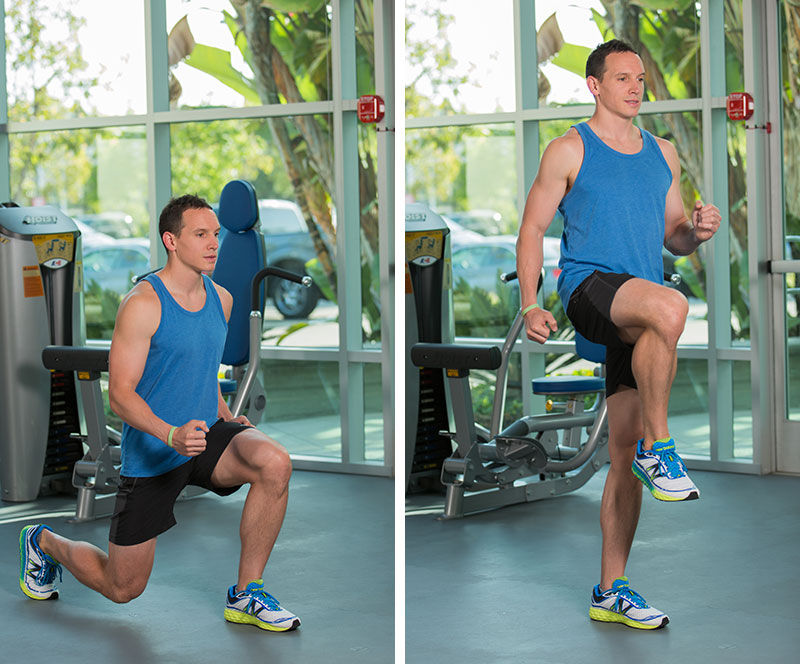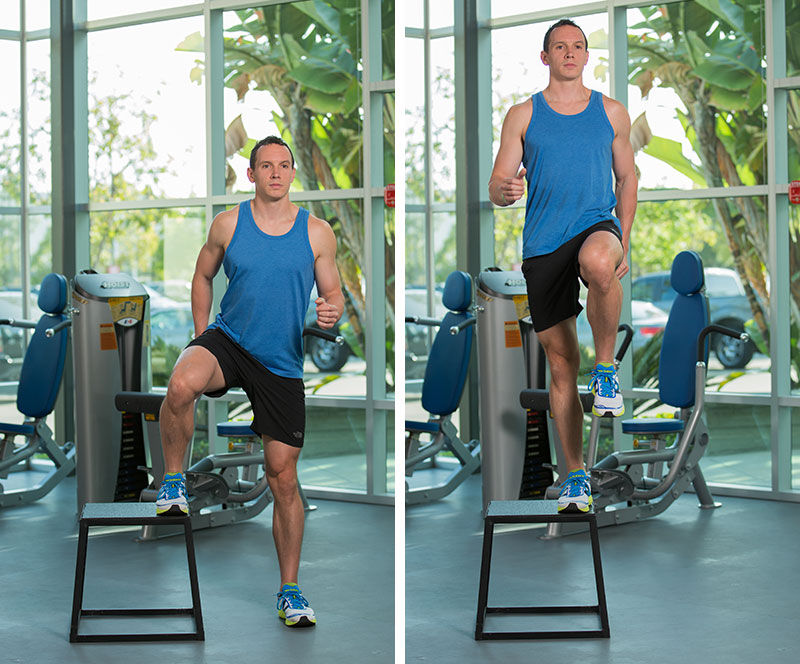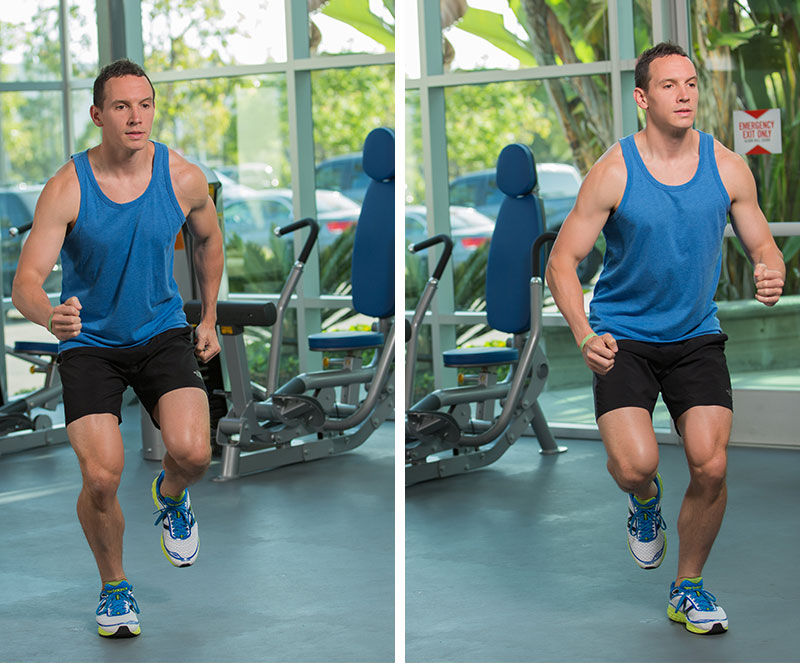Whenever runners ask me about the best way to train for their favorite activity, my response is to ask: Are you running to get in shape or do you want to get in shape to run?
We are all familiar with gravity as the force that accelerates us into the ground, but we often overlook ground reaction force (GRF), which is the upward force applied by the ground every time we take a step. If you enjoy running, but do not have sufficient hip and core strength to maintain stability every time your foot hits the ground, you may experience soreness in your knees or low-back. The gluteus medius is an important hip muscle that controls motion of the pelvis and femur. During running, the gluteus medius is responsible for maintaining stability between the pelvis and leg, allowing the foot to successfully push off of the ground. If the gluteus medius can’t do its job, one side of the pelvis could drop as the opposite foot hits the ground, causing the knee to internally rotate, which is a potential cause of injury.
Try this: Balance on your right foot. Place your right hand over your right hip and let your left hip drop. You should feel your right hip move to the right and your right knee internally rotate. Now imagine this happening every time your foot hits the ground and it is easy to see how you may start feeling discomfort in the right knee.
If you enjoy running and want to maximize the enjoyment from your workouts, the following workout can be performed almost every day of the week to improve the strength of the core muscles that are responsible for controlling stability of the body as the foot hits the ground and GRF radiates upward into your body. It’s important to realize that, according to the principle of specificity, you should train in the position that you plan to use during your workouts—in this case, while standing on one leg. Lying on the floor or using a machine in a seated position will not strengthen the core muscles in a way that allows them to decelerate GRF when standing on one leg. These exercises can also be used as an effective pre-running warm-up.
1. Single-leg balance with lateral toe touch and cross-body reach

Balance on your left foot. With your right foot, reach for the 3 o’clock position while reaching across your body with your right hand (allowing your trunk to rotate to the left). Touch only the toes of the right foot to the floor. Repeat for 10 to 12 reps on each side and rest for 45 seconds; complete two sets.
2. Opposite side lateral toe touch with overhead lateral reach

Balance on your left foot with your knee slightly bent. Reach your right foot across the front of your body toward the 9 o’clock position. At the same time, reach the left hand overhead toward the right side of the body (the combination of movements creates a lot of adduction at the left hip, which helps to strengthen the gluteus medius). Complete 10 to 12 reps on each side and rest for 45 seconds; complete two to three sets.
3. Reverse lunge to balance

Begin standing with your feet hip-width apart. Step directly backward with your right foot as your left hip sinks into flexion. Press your left foot into the floor and pull your left knee backward to return to standing as you bring your right leg forward. Do not allow it to touch the floor; rather, hold it in the air for three to four seconds and then perform the next backward lunge. Complete eight to 10 reps on each leg and rest for 45 seconds; complete two to three sets.
4. Lateral step-up to balance

Use a box or step that is approximately the same height as your kneecap. Stand to the side so that your right leg is next to the box. Step up laterally (to the side) with your right leg; press your right foot into the box to stand up as tall as possible. Bring your left knee up until the hip is at 90 degrees. Hold for three to four seconds, lower down to the floor and return your right foot to the floor after each rep. Complete six to eight reps for each leg and rest for 45 seconds; complete two to three sets.
5. Lateral bound to balance

The purpose of this drill is to focus on the landing by holding the balance position for three to four seconds. Begin by pressing your left foot into the floor to leap to the right. As your right foot hits the floor, sink into your right hip and press your right foot into the floor. Hold this balance position for three to four seconds and return back to the left leg. Complete six to eight bounds on each leg and rest for 90 seconds; complete two to three sets.
6. Forward bound to balance

Begin on your left foot. Hop forward to land on your right foot. As your right foot hits the floor, sink back into your right hip and hold the single-leg balance for three to four seconds before leaping to the left foot. Focus on using your glutes and core muscles to stabilize the landing, so hold the balance at each landing for a few seconds before moving to the next leg. Complete six to eight forward bounds on each leg and rest for 90 seconds; complete two to three sets.
Perform these exercises two to three times a week or as a warm-up before your longer runs and you will undoubtedly begin to get more enjoyment out of your running workouts.




 by
by 






 by
by